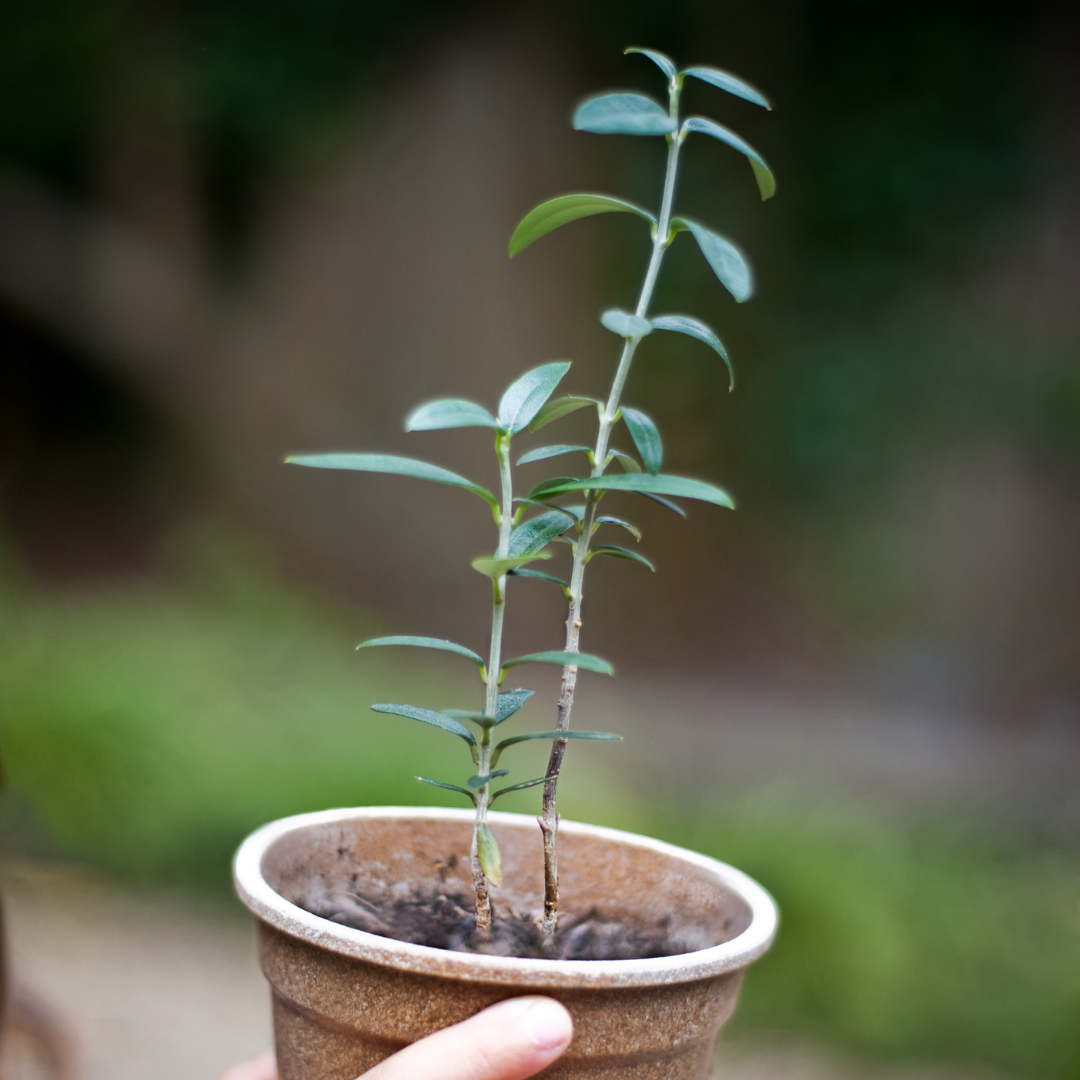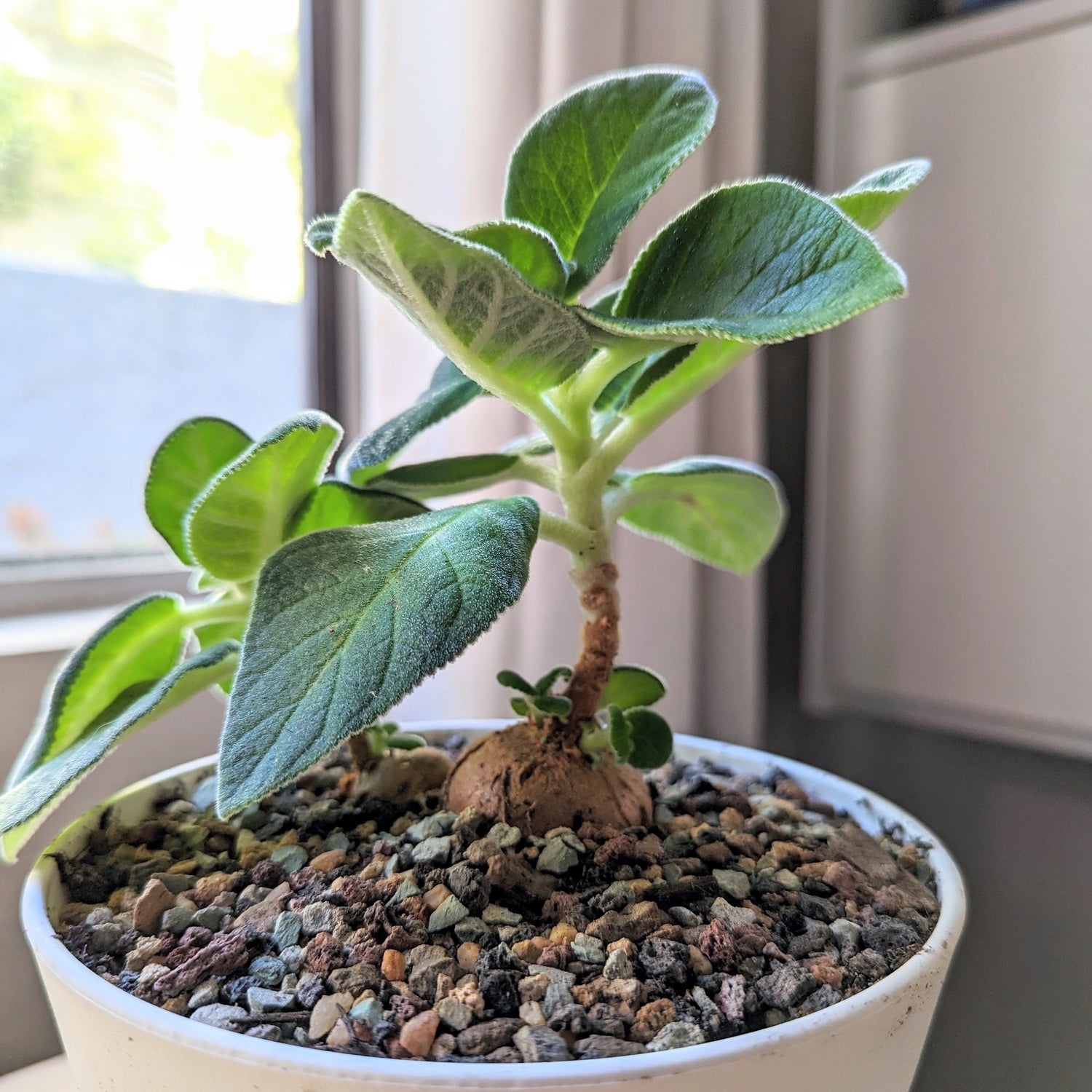Growing houseplants from seed is a hobby in its own right, very much separate from collecting adult houseplants. These little guys require their own materials, unique set-up, and care routine, which can get expensive if you're not sure where to start!
There are so many supplies out there meant to make starting tricky seeds easier, such as grow lights and mini greenhouses, which often do help, but aren't strictly necessary to get great germination rates!
I've been growing exotic seed varieties for years now, with various setups and various rates of success, so I made a breakdown of different components of a good houseplant seed setup, and some more budget-friendly alternatives for each one.
1) Heat Mat
avg cost: $15-$25
If you choose to invest in anything, invest in a heat mat! Houseplant seeds need consistent temperatures >70F to germinate, and if you're growing palms or cycads, they need even higher temperatures to sprout(they prefer 80F-85F).

Heat mats range in price depending on the size you get and if you want to be able to control the temperature, but in most cases, a basic heat mat will suffice! Most heat mats aren't too expensive, you can find them at various online retailers, and most basic heat mats cost less than $20 and are well worth the investment considering the addition of one boosts your germination rates so much that you definitely get your money's worth from the seeds and the heat mat!
The alternatives:
If you're not using a heat mat, covering your seeds with a humidity dome(we go over that below!) helps keeps the seeds on the warmer side. We always recommend using a humidity dome anyway, so you'll be giving your seeds a huge advantage using one either way, but it isn't as fool-proof of a solution for creating the ideal temperature environment on its own for the seeds as a heat mat.
A heat mat isn't necessary if you're growing your seeds indoors where your home already consistently stays >70F. f you wait to plant your seeds in the summer or just keep those warm temperatures naturally in your home, you likely won't need a heat mat.
*Note:* keeping your seeds at a consistent temperature is key. Make sure you keep your seed setup away from any heat/AC vents, and if you are relying on summer warmth to germinate your seeds, that the temperatures don't get too high because that can damage the seeds as well.
2) Humidity Dome/Greenhouse
avg cost: $2-$15 per mini greenhouse

A humidity dome or mini greenhouse is extremely useful for creating both a warm and humid environment for seeds to germinate, which is particularly necessary for tropical varieties that rely on these exact conditions to sprout. As mentioned above, we always recommend using a humidity dome for any houseplant seeds, even easier varieties such as Rainbow Coleus or Polka Dot Plants.
The alternatives:

While mini greenhouses with humidity domes are extremely convenient to use for seed starting, there are plenty of DIY alternatives that work just as well(and save you $$ so you can buy more seeds instead!).
Here are some options you can try out:
- covering your planter with a ziploc baggie
- covering your planter with plastic wrap
- a glass jar or dome
- repurposing a take-out container
*Note*: make sure whatever dome you do use, that you create a tight a seal as possible so moisture can't escape from the system! If you don't see considerable condensation building up on the inside of the "dome", then either your soil isn't moist enough or your system is leaking moisture.
3) Soil
avg cost per soil pod: $2-4
Using the right soil medium can make or break a seed setup! If you use contaminated soil, it can cause a mold, fungus, or pest outbreak that can kill off any seeds or seedlings that do make it through. I personally use coconut fiber soil pods for seed starting, which are great for creating a very well-draining and sterile environment for the seeds to germinate.
The alternatives:
Any indoor potting mix(as long as it's fresh and hasn't been used before) can work great, just make sure it drains well so that your seeds don't drown!

Another alternative is avoiding any kind of soil and using the paper towel method to germinate your seeds. Essentially this means placing your seeds on a wet paper towel, folding them up and placing them in a ziploc baggie and keeping them in the same conditions you'd keep your other seed setups(heat mat, grow lights, etc.). This is not only a space and money saver, but can be even more effective than planting your seeds in soil because the seeds have access to so much moisture and warmth!
The paper towel method works best for seeds that are larger, so that you can easily transfer them to soil once they do germinate. Some houseplant seeds that really thrive with the paper towel method include Fatsia japonica, Umbrella Plants, Philodendron Hope and Coffee Plants.
4) Grow Lights
Avg cost: $20-$40
Grow lights are fantastic for seed starting setups. LED lights produce very minimal heat, which means that your seeds can stay at a very consistent temperature without being overheated, all while getting a stable source of light.
The alternatives:

Grow lights aren't necessary, however, for starting your seeds! For one, houseplant seeds don't strictly need light to germinate, and the priority is definitely with making sure they have enough warmth and moisture. Once the seeds sprout, then it's key to make sure the seedlings have a light source in order to grow.
A windowsill works great, just make sure this windowsill gets bright *indirect* light. That means, no direct sun rays, unless it's a bit of morning or evening sun. If you do only have access to sunny windows, placing your seed setup a little further away from the window so it's still bright, but not as strong, works!
What to look out for: the main downside of using a windowsill, aside from not being able to have as much control of how much light your seed setup gets, is temperature fluctuations. This is especially detrimental in the cold months! Seeds need consistent, warm temperatures to germinate, and being by a window(even a closed window) can cause enough ups and downs that the seeds may not germinate.
Hopefully you found the different seed setup options useful! Let us know which ones you've tried, or if you tried other alternatives, and what worked for you! If you're looking for other seed starting tips, check out these other articles we have:





